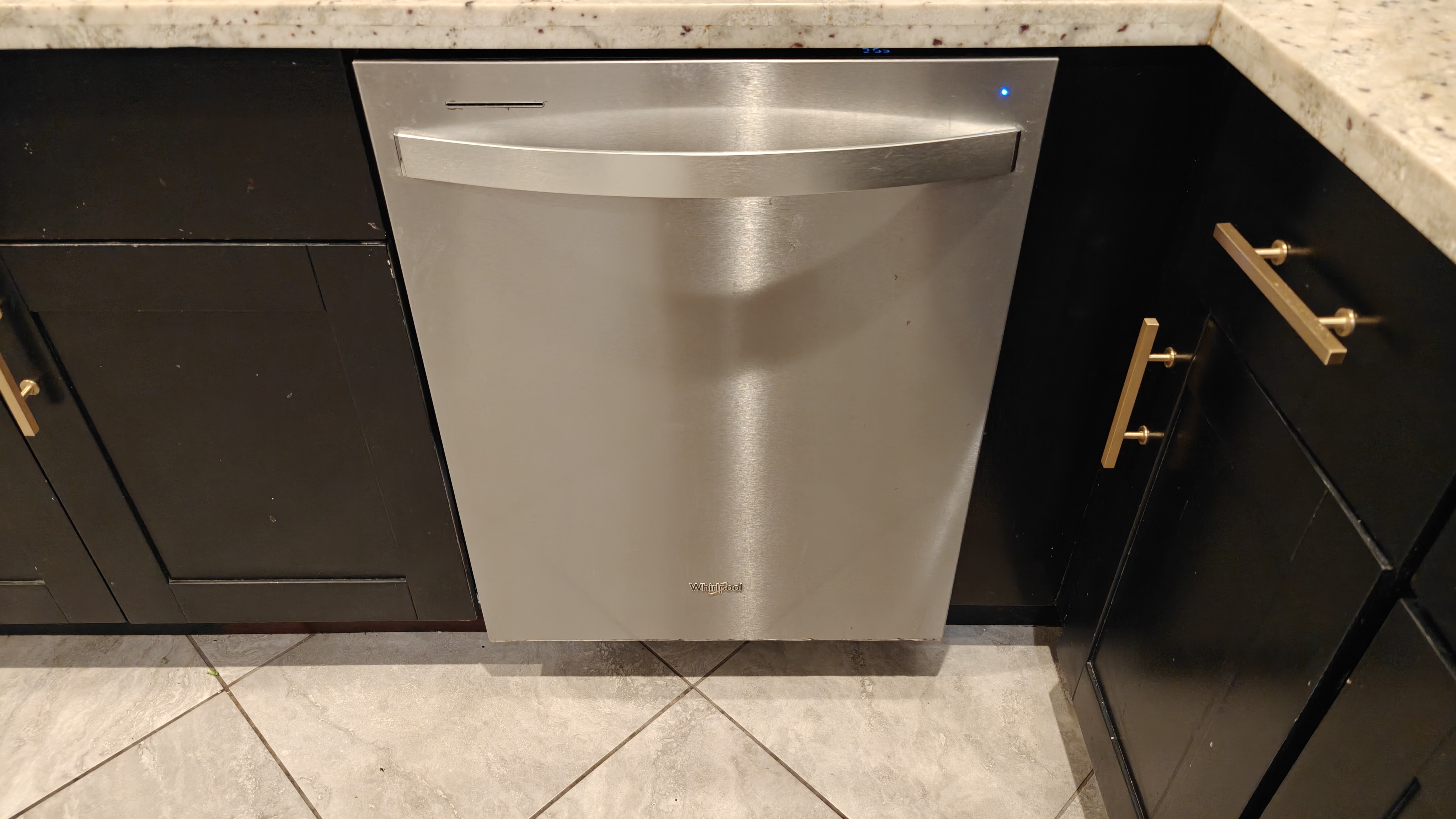Best garage door openers
With the best garage door openers, you’ll have one less thing to do when you return home.
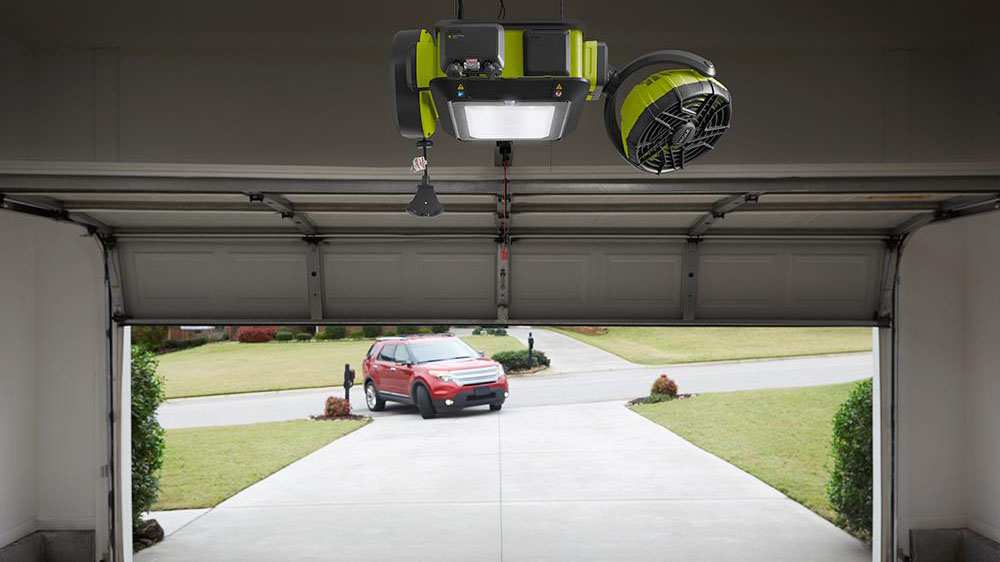
Looking for the ultimate convenience? The best garage door openers save you from the annoyance of getting out of the car and opening the door yourself. You’ll be pleased you invested in one when it’s raining or it’s been a long, hard day. The best garage door openers make everyday life easier, whether you’re commuting or driving out for groceries.
Networx helps you find the perfect company or contractor for your garage door needs. Use them to get the best quotes from companies that serve your area.
There’s a lot to think about when figuring out the best garage door opener for your home. Help is at hand as we’ll walk you through the key considerations. First, you’ll need to choose the type of garage door opener you want. There are chain-drive, direct-drive, and belt-drive options. The difference? Belt-drive models tend to be quieter than chain-drive and direct-drive options. The reduced noise makes them a great choice for your home when you may want something more discreet.
For the tech-savvy, there are remote control and smart door openers. These enable you to prepare your garage from down the street so you don’t have to wait to get in.
Worried about reliability? Look out for openers with a robust warranty to give you peace of mind that it’s been designed to last.
Want more ways to make everyday life easier? Don’t miss our guides to the best home safes and the best video doorbells.
For now, our round-up includes the best garage door openers from top brands such as Genie, Chamberlain, and Ryobi. Read on for our picks.
Best garage door openers
1. Chamberlain B970: Best overall garage door opener
Why you can trust Top Ten Reviews
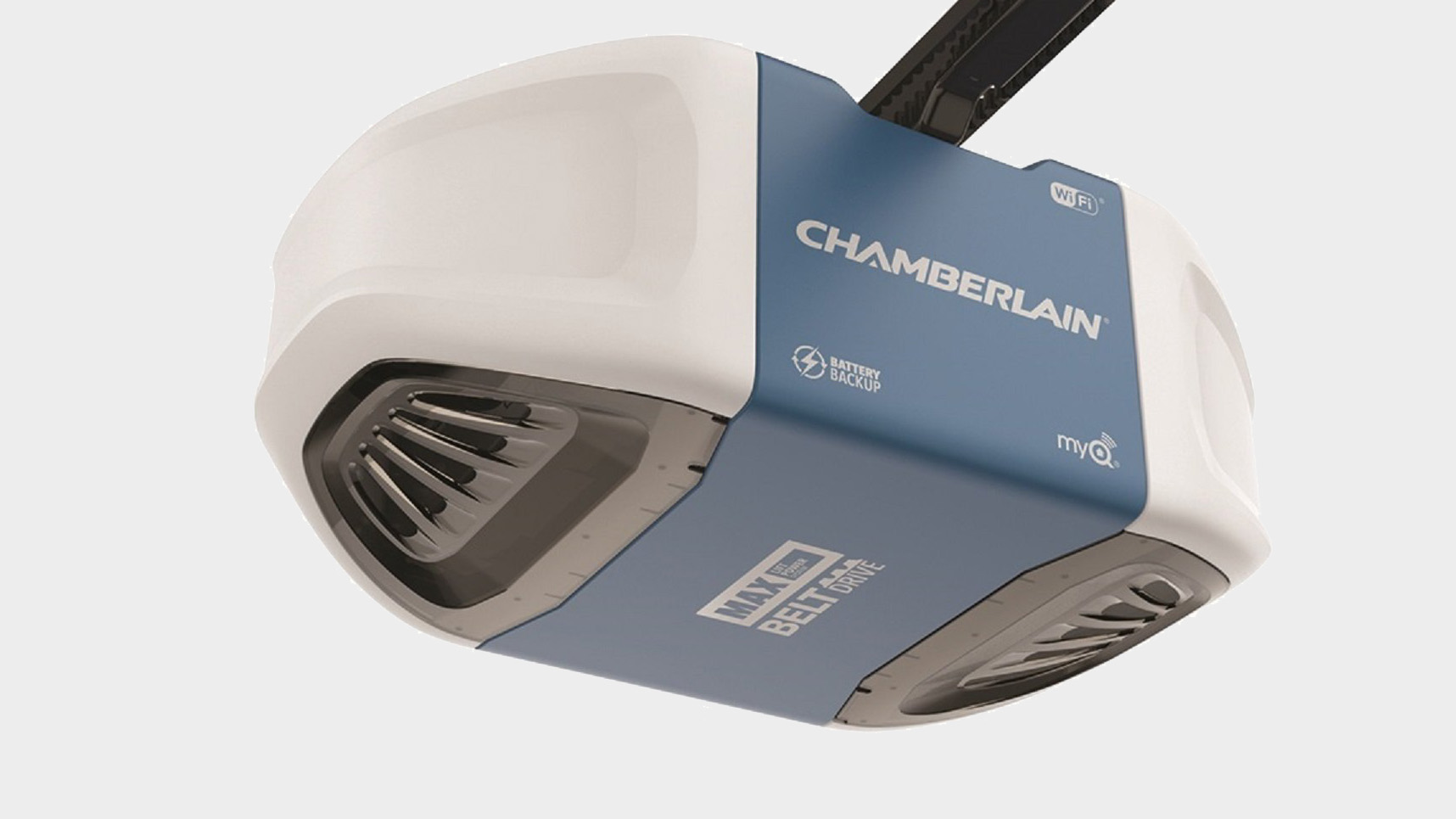
Specifications
Reasons to buy
Reasons to avoid
We chose the Chamberlain B970 as the best garage door opener because it's a great all-rounder. It has most of the features we look for in an opener, and then some, plus it's powerful enough to open even heavy garage doors.
Let's start with one feature we love - the B970 comes with a built-in backup battery. This means you can access your garage even in the event of a power outage, which is especially helpful if you have trouble using the manual release.
Another feature we liked is that the lift system uses a belt to provide a quieter way to open your garage door, especially compared with more-common chain-driven systems. And with a motor rating of 1 1/4 horsepower (HP), the unit can easily lift residential garage doors without causing excess wear and tear.
Both the belt and the motor have a lifetime warranty, while the other parts get five years of warranty coverage. This isn’t as good as Sommer’s lifetime parts warranty, but it’s still decent.
And here's the deal breaker - the unit comes with two remote controls and built-in Wi-Fi, which allows you to control the garage door using the Chamberlain myQ app, so now you can open your garage door from your smartphone!
- Read the review: Chamberlain B970

2. RYOBI GD201: Best garage door opener for heavy doors
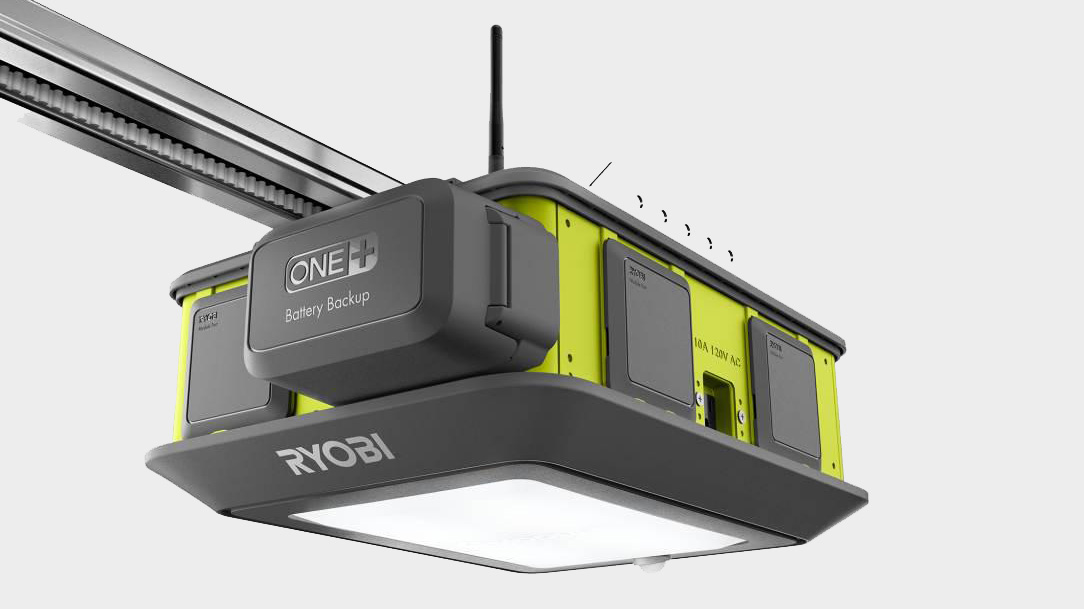
Specifications
Reasons to buy
Reasons to avoid
Boasting a massive two horsepower, the RYOBI GD201 ultra-quiet garage door opener is more than capable of opening the heaviest of garage doors, but it's also quick, quiet and versatile. It's a belt-drive model, meaning it's quiet in operation, that has a reinforced steel belt drive for extra durability.
In terms of features, it's got it all - built-in Wi-Fi, two remotes, a wireless keypad, an outdoor keypad and safety sensors. Thanks to the integrated Wi-Fi you can download the RYOBI app to monitor and control your garage remotely from your smartphone.
As part of the RYOBI family of products, it's compatible with the ONE+ battery system, so you can plug in a RYOBI ONE+ battery and the unit will still function in the case of a power cut. Be aware that you'll need to buy the battery separately though, as it's not included with the product.
You can also customize this door opener using the RYOBI garage door opener accessories, to make it do things like play tunes or shine lasers to help you park. It really is like living in the future!
In terms of its features, this opener would be up there with the Chamberlain B970 if it wasn't for the safety feature of a beeping noise when the door is closing, which annoys some people, and some negative users reviews.
- Read the review: RYOBI GD201

3. Chamberlain B510: Best value garage door opener
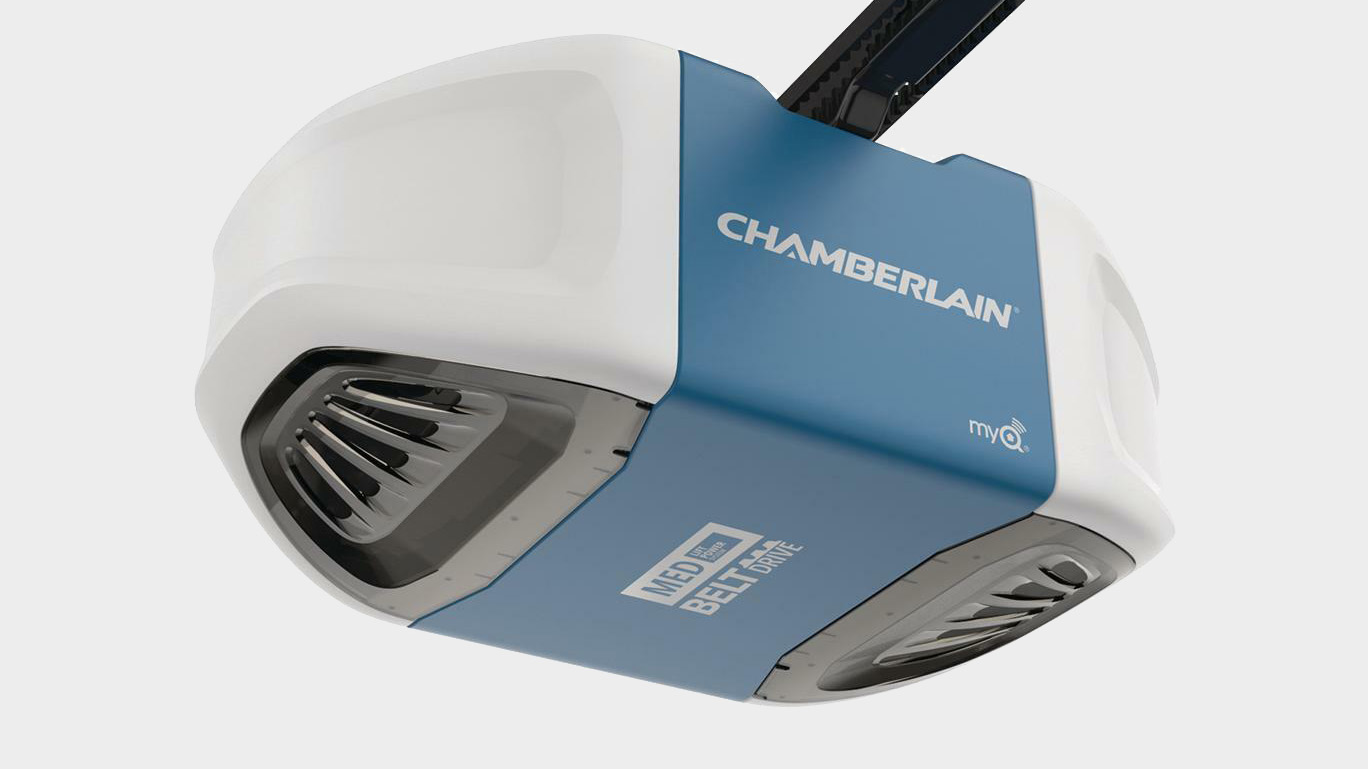
Chamberlain B510
Our expert review:
Specifications
Reasons to buy
Reasons to avoid
What we have here, with the Chamberlain B510, is a less fully-featured version of the Chamberlain B970 shown above, so if you're shopping on a budget it's one to consider because it offers the same Chamerblain quality, but at a lower price point.
However, the B510 does come with significantly fewer features than the B970. For the price drop, you're losing the Wi-Fi capabilities, backup battery and you're dropping down to a motor with just half a horsepower.
On the plus side, this is a belt-drive model so it's quiet, plus the remotes use Triband technology so will work from a massive 1,500 feet away. Like it's bigger brother, the B510 uses the same 100 billion code encryption, so you can be sure your garage is safe and secure. The safety sensors also project an invisible beam that prevents it from closing on people or objects.
If you're shopping on a budget then this is one to consider, but please be aware that the B510 is specifically designed for a 7-foot door, and an extension kit is required for an 8-foot garage door.
- Read the review: Chamberlain B510

4. Genie 1035-V: Best budget garage door opener
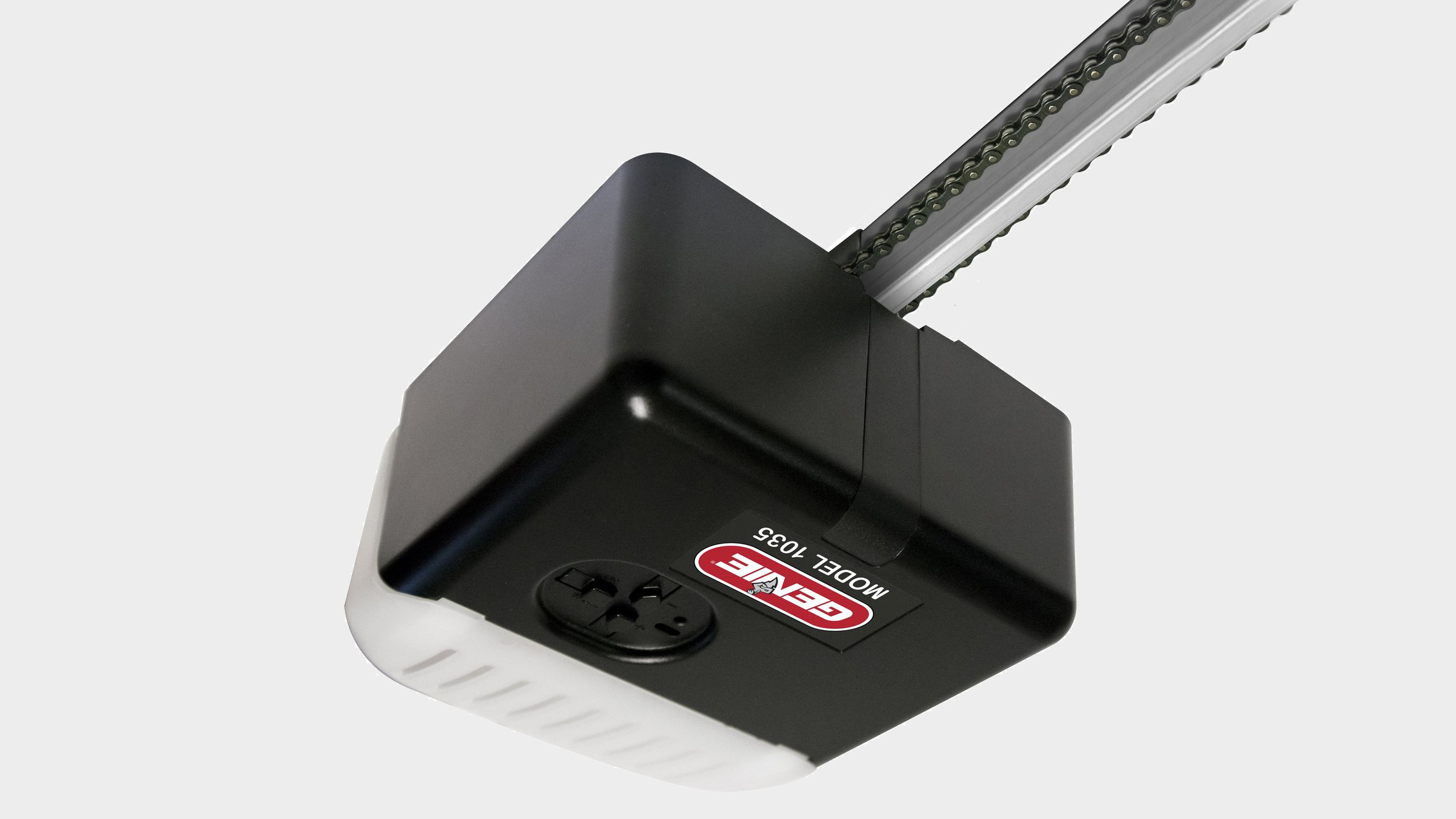
Specifications
Reasons to buy
Reasons to avoid
Not everybody can afford to splash out on a garage door opener. Sometimes you just want a product that can get the job done without all the extra bells and whistles. The Genie 1035-V is a great example.
Because it uses a chain drive it's not the quietest garage door opener you'll find on the market, but it's tough and durable and will open a residential 7 foot high, 350lb garage door smoothly. Note, the unit will not work with an 8 foot door.
This is a basic model though, so you don't get much else. There's no lighting, Wi-Fi or app, although you can add these buy purchasing the Aladdin Connect system. It does work with popular built-in car remote systems like HomeLink and Car2U out of the box though.
It includes a push-button wall control, car remote control and it has a Safe-T-Beam System to reverse the closing door action if anything passes through an infrared beam, which is good to know if you have kids.
When it comes to remote controls you only get one, although you can purchase a second one from Genie and program it to work with your unit. Genie users report that the remote works from 200 feet away quite comfortably.
Finally, It comes with a 2 foot power cord included, which is hopefully enough to reach your power source.
So, while the Genie lacks stand-out features, it does provide the basics you'll need. One to consider if you need to get everything done on a budget.
- Read the review: Genie 1035-V

5. Chamberlain B1381: Best garage door opener for lighting
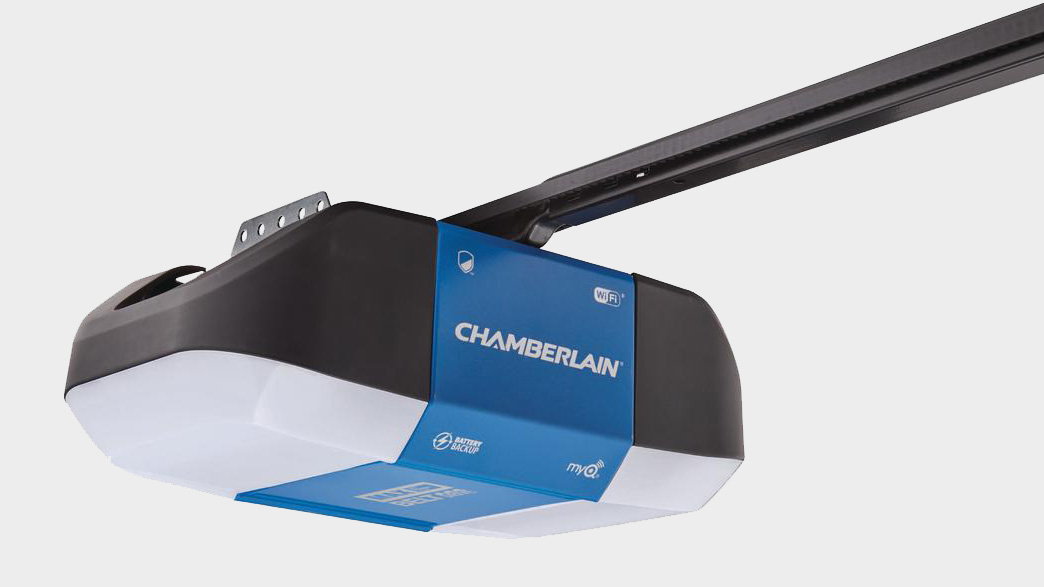
Specifications
Reasons to buy
Reasons to avoid
One aspect to consider with garage door openers is lighting. The ceiling spot where you fit your door opener is the prime location for adding lighting to your garage, so it makes sense to combine the two devices into one.
Even so, lighting tends to be an added extra when it comes to most garage door openers, so you only find the feature on the more expensive models. A prime example is this Chamberlain B1381. It basically combines all the features of the B970 we mention above, with integrated LED lighting and a much more modern-looking case. The alternative method of lighting is to use bulbs, be these need to be replaced much more frequently. LED is a superior method.
The B1381's LED outputs 3,100 lumens, which is enough to light up most modern garages. Aside from the lighting, this unit has all the high-quality features and parts that make up the B970, so there's a robust and quiet belt drive, 1 1/4 horsepower motor, built-in Wi-Fi and remotes that use Triband technology.
In the box you get the garage door opener, rail, belt, wireless keypad, battery, 3-button remotes, full-function wall control, safety sensors, mounting hardware and an instruction manual.
In all, there's a lot to recommend in the B1381, but most of all, you can wave goodbye to fumbling around for your keys in the dark thanks to the impressive built-in LED lighting.
- Read the review: Chamberlain B1381

6. Mighty Mule MM9545M: Best garage door opener for features
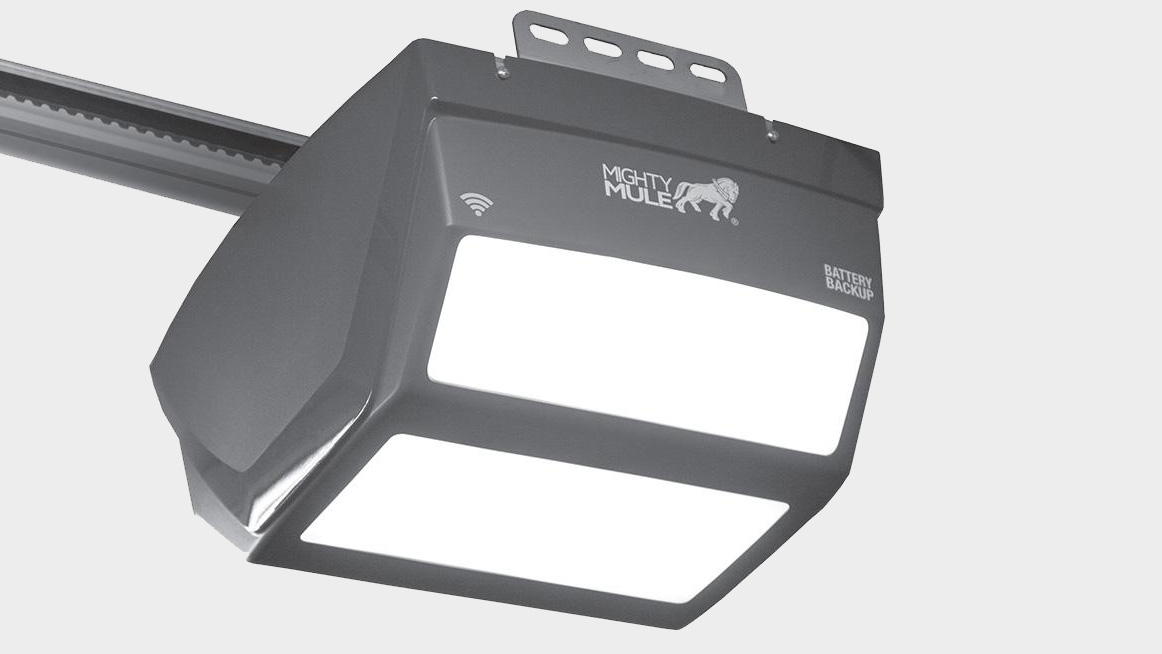
Specifications
Reasons to buy
Reasons to avoid
It's hard to find a feature that the Mighty Mule MM9545M is missing. It's a belt drive model, which makes it nice and quiet, and like most other garage door openers it has two remotes, sensors, wall panels and Wi-Fi but it also features a built-in garage light.
Having a built-in light is a major bonus. This model uses LED too, which means the light will last much longer before you need to think about replacing a bulb.
The MM9545M comes with its own app, called that Mighty Mule Smart Control App. Once downloaded this enables you to open and close your garage door with ease from your phone.
Overall this is a great garage door opener, and there are scores of positive user reviews to be found online. It's slightly more expensive than the Chamberlain B970, but cheaper than the B1381, which is the Chamberlain model with an LED light, so it's good value.
- Read the review: Mighty Mule MM9545M

7. Skylink ATOMS ATR-1612C: Best chain drive garage door opener
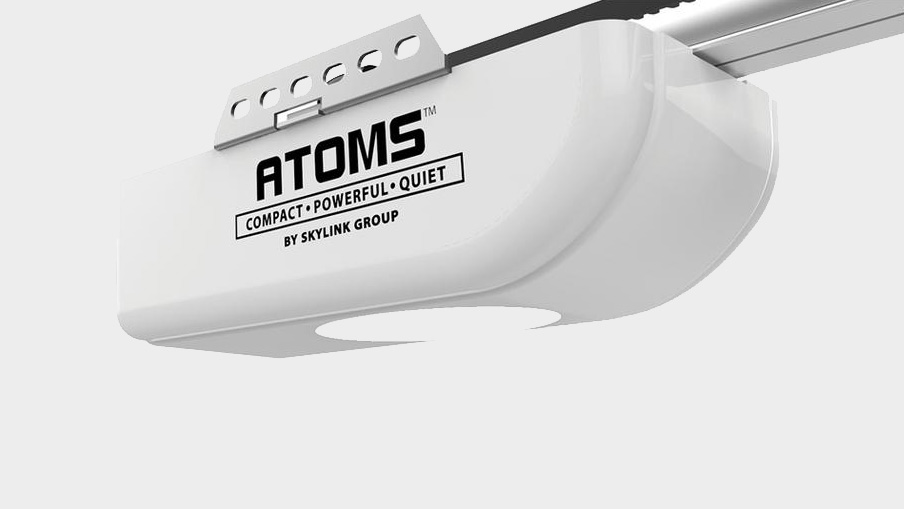
Specifications
Reasons to buy
Reasons to avoid
Chain drive garage door openers used to be all the rage until quieter belt drive models stole their thunder and replaced it with a mild hum. So, while you probably want to go for a belt drive model if you're shopping for a new garage door opener we thought we'd include at least one more chain drive model in our buying guide for you to compare it against, rather than just the Genie 1035-V.
The Skylink ATMOS is well specced with a 1/2 horsepower DC motor, two infrared sensors and a 12-watt LED light but only comes with one remote control and there's no backup battery included by default, although you can purchase one separately, and no WiFi.
The big draw of the Skylink ATMOS ATR-1612C is the price. And so long as you don't mind a chain drive model, that makes it a bargain. Skylink also produces belt drive models, like the ATMOS ATR-1723BK, but they are more expensive.
- Read the review: Skylink ATOMS ATR-1612C
FAQs
How much do garage door openers cost to install?
Before buying one of the best garage door openers, you’ll want to factor in installation costs to avoid being caught out. These costs will vary depending on where you buy your device and the features. For example, a model that gives you a high level of customization is likely to be more complex and expensive to install. You can expect the installation of a double-length door opener to cost more than a single one.
A ballpark guide is $65 - $85 per hour for labor, though bear in mind that more complex installations may increase the rates. If you’re purchasing a smart garage door opener, check out the more in-depth installation processes offered by retailers like BestBuy and Home Depot.
Best garage door openers for quiet operation
Looking for a garage door opener to add a touch of luxury to your everyday life? You’ll want to avoid one that makes a racket every time you enter and leave your home. We recommend looking for belt-operated devices which tend to be quieter and make you feel welcomed home. If peace and quiet are a priority then look no further than our top pick, the Chamberlain B970, a popular choice for people wanting a discreet door opener. Alternatively, the RYOBI GD201 is another quiet option so you don’t have to worry about making a noisy entrance.
Remote control technology
The best garage door openers make everyday life as fuss-free as possible. If you want to take it to another level, why not try a remote-controlled or a smart garage door opener? These types of door openers put you in charge with minimal effort required.
If you don’t want anything technical, try a remote control option. A bonus is that they tend to be cheaper than smart door openers. Tri Brand has a good reputation for remote control options. They even offer models which work from over a thousand feet away.
If you’re searching for the ultimate in convenience, a smart garage door opener offers a streamlined experience. You can control these devices with your smartphone wherever you are. What’s more, you won’t have to worry about losing the remote control. Our top pick, the Chamberlain B970, lets you key in delivery drivers when you’re not at home. You’ll have peace of mind that your parcels are safe and you won’t have the hassle of tracking them down.
Backup battery
Garage door openers are powered by your mains, which is essential for everything to run smoothly. On a day-to-day basis, this is something you won’t even need to think about. But in the event of a power failure, you might wish that you’d planned ahead, as you don’t want to get locked in your garage or be unable to gain access at all.
In the case of emergencies like these, a 12-volt battery can come in pretty handy. These can be found included within the purchase of many garage door openers, and will be worth it when it comes down to the wire. Look out for them if you want to be prepared for anything a power out might throw at you.
Safety sensors
Worried about safety? You can rest assured that most garage door openers come with sensors to prevent accidents as a default. The majority of devices have clever built-in sensors that can detect when there’s something in the way. They send a beam of light across the door and if it’s broken, the door won’t open. This safety device means you don’t have to worry about small children or pets that could be at risk of injury. The sensors also detect objects that are in the way which can protect your car from scratches.
Sign up to receive the latest news, reviews, buying guides and deals direct to your inbox
Graham usually works in home computer journalism for his day job, and has been at Future Plc for many years, mostly employed across our print titles. He has a keen interest in all things gardening, and has written extensively about lawn mowers and other garden care products while in his freelance capacity at Top Ten Reviews.


